
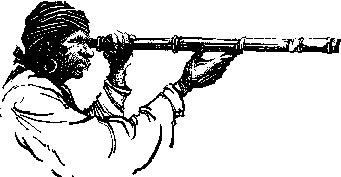
Soon time to control PINE BARK ADELGID, a follow-up treatment may be needed in July;
COLORADO POTATO BEETLES will be leaving overwintering sites;
MAPLE PETIOLE BORERS may cause leaf drop of maples;
EUROPEAN PINE SAWFLY larvae may be found feeding on conifers;
GIANT BARK APHIDS on oaks and other shade trees;
SPRUCE SPIDER MITES can cause yellowing of spruce, hemlock, arborvitae, and other hosts.


Phil Bogdan of the Plant Management has provided the following summary of the proceedings of the first national meeting of the National Plant Diagnostic Network (NPDN). The meeting was held on January 28 through 31, 2007, in Orlando, Florida, and the proceedings are now housed on the Plant Management Network at http://www.plantmanagementnetwork.org/proceedings/npdn/2007/.
These proceedings, which include 51 posters along with 54 poster abstracts and 41 PowerPoint presentations, feature an impressive array of topics focusing on emerging insect and pathogen threats, such as emerald ash borer, Ralstonia solanacearum, and UG-99 wheat rust.
The program guide, also included in the proceedings, offers a detailed meeting agenda as well as the contact information of NPDN operations committee members.
NPDN, a partner of the Plant Management Network since December 2007, is a group of plant disease and pest diagnostic facilities at land-grant universities throughout the United States. It was established by the Cooperative State Research, Education, and Extension Service (CSREES) to develop a network linking plant and animal disease diagnostic facilities across the country.
NPDN's mission is to enhance national agricultural security by providing the means for the quick identification and establishment of protocols so that pests and pathogens can be immediately reported to appropriate responders and decision makers.
Fore more information on the National Plant Diagnostic Network, visit www.npdn.org.
The Plant Management Network is a cooperative not-for-profit collaboration of the plant science community at large. Together with its 56 partners, PMN provides science-based solutions in agriculture for researchers and professionals in the applied plant and agricultural sciences.

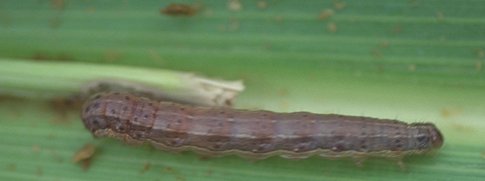 Now that the freeze and cold and windy weather of the last two weeks is over, the counts of armyworms in pheromone-baited traps is going back up. The UK-IPM traps at Princeton captured 224 moths this week, a significant increase from last week's 11 moths. In Lexington the turn around is not quite so dramatic; with 20 moths counted on April 20th compared to 3 last week.
Now that the freeze and cold and windy weather of the last two weeks is over, the counts of armyworms in pheromone-baited traps is going back up. The UK-IPM traps at Princeton captured 224 moths this week, a significant increase from last week's 11 moths. In Lexington the turn around is not quite so dramatic; with 20 moths counted on April 20th compared to 3 last week.
The Princeton increase is significant as the 224 number is approaching the peak number of about 430 that was caught in 2006, an outbreak year. We do not have historic numbers to compare it to for Lexington. Never the less, if the counts continue to rise next week, essentially following the Princeton increases, I think we should definitely be on the lookout for this pest.
Please look at the graphics on the IPM web pages: http://www.uky.edu/Ag/IPM/ipm.htm .
Besides the increase and decrease in numbers, you may also notice some differences in timing.
The 2007 Princeton population increase is later than was the 2006 increase, probably due to two reasons. 1.) This spring has been cooler than last spring, and 2.) A delay caused by the severe freeze of April 6-9th.
The counts in Lexington, though they will likely follow the same pattern as the Princeton counts, will occur somewhat later in the season because temperatures in Lexington, overall, are cooler than those in Princeton. This shows why calendar dates are not as useful in understanding insect population growth as are temperatures. Temperature is the overriding factor in setting the rate of insect development whether your look at an individual insect or the development of a pest population.
If the populations continue to climb, we are likely to see damage to crops in Kentucky this year. Remember, the insects we are counting now are moths. They are not the damaging stage. That will come later when their offspring, the caterpillars, are out. If you would like to review what happened last year, I invite you to review the articles predicting worm occurrence in 2006. They can be found on the Kentucky Pest News website at:
http://www.uky.edu/Ag/kpn/previous.htm On the opening page click on "Previous" then "2006 Index" then, review the armyworm articles in the April 10th, 17th and 24th and May 1st issues. You will see that by this time last year we are already seeing a few worms. Additionally, there were several reports of considerable infestations in central Kentucky.
If the counts are up again next week, I will begin to employ a degree day model to predict the likely time frame for the occurrence of the damaging pests. A quick look indicates that, given historic weather for eggs laid today (April 20th), the very first young worms could appear by 07 May. I cannot rule out that caterpillars from early flying moth will be around before that, but I think the very severe cold of Apr 6-9th probably controlled those insects.
In Kentucky the armyworm is a pest of corn, wheat (small grain) and pasture / hay grasses. Small grains will be a moot point this year. Corn planted into standing small grains could be an important target (See Risk of Planting Corn into Standing Wheat KPN No.1123, April 16, 2007). However, in the last two outbreaks (2001 & 2006) the most often reported problem is in grass pastures / hay fields.

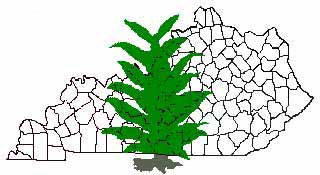
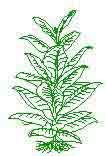 We were all caught by surprise when blue mold popped up last May. This gave Kentucky the dubious honor of being the first state to report blue mold in the U.S. for the third consecutive year. Despite the early appearance of this disease, overall damage to the crop was light-to-moderate across the state. The blue mold epidemic was slowed to a large extent by timely spells of hot and dry weather that offset the cooler rainy periods that took place during the summer. How will blue mold affect the 2007 crop? As I've said before, we really don't know for sure. The amount of blue mold that we'll see in Kentucky this season is highly dependent upon the amount of inoculum (spores) that is introduced from areas south of us or produced in-state if the pathogen, Peronospora tabacina, survived the mild winter in a protected environment. Out-of-state transplants, fingered as the likely source of inoculum for the 2006 outbreak, should not figure into this year's blue mold outlook, since our sources indicate that the production of tobacco plugs in Florida has ceased. Of course, we all know that anything can happen, and we can't rule out the importation of plants from southern states this season. Weather during the summer months plays an important role in the development of blue mold as well. A wet and cool summer will likely mean a higher risk to our growers from the disease, while hot and dry conditions should equal low levels of blue mold. The year-to-year unpredictability of blue mold and its potential to cause serious losses makes it imperative to monitor this disease and plan ahead for its management.
We were all caught by surprise when blue mold popped up last May. This gave Kentucky the dubious honor of being the first state to report blue mold in the U.S. for the third consecutive year. Despite the early appearance of this disease, overall damage to the crop was light-to-moderate across the state. The blue mold epidemic was slowed to a large extent by timely spells of hot and dry weather that offset the cooler rainy periods that took place during the summer. How will blue mold affect the 2007 crop? As I've said before, we really don't know for sure. The amount of blue mold that we'll see in Kentucky this season is highly dependent upon the amount of inoculum (spores) that is introduced from areas south of us or produced in-state if the pathogen, Peronospora tabacina, survived the mild winter in a protected environment. Out-of-state transplants, fingered as the likely source of inoculum for the 2006 outbreak, should not figure into this year's blue mold outlook, since our sources indicate that the production of tobacco plugs in Florida has ceased. Of course, we all know that anything can happen, and we can't rule out the importation of plants from southern states this season. Weather during the summer months plays an important role in the development of blue mold as well. A wet and cool summer will likely mean a higher risk to our growers from the disease, while hot and dry conditions should equal low levels of blue mold. The year-to-year unpredictability of blue mold and its potential to cause serious losses makes it imperative to monitor this disease and plan ahead for its management.
Fortunately, there are easy-to-access resources available to help us track the occurrence and movement of blue mold (and other diseases) in the tobacco producing regions of the U.S., and to assess the level of risk to tobacco around the country. The Kentucky Blue Mold Warning System is a cooperative effort developed by Dr. Bill Nesmith over 27 years ago and involves growers, county agents, and Extension tobacco specialists in Kentucky and other parts of the U.S. The status of blue mold in Kentucky and surrounding states is updated weekly during the production season and can be found at www.uky.edu/Agriculture/kpn/kyblue/kyblue.htm and in the Kentucky Pest News. Breaking information will be published on the Kentucky Blue Mold Warning System web page and through a mailing list, the KY Blue Mold Alert. Subscribe to the KY Blue Mold Alert mailing list by sending a message to: listserv@lsv.uky.edu. The message body must contain, verbatim, the line subscribe ky-bluem-alert, followed by a blank line. You will receive, by return mail, a message requiring confirmation of your subscription.
The North American Plant Disease Forecast Center (NAPDFC), located at North Carolina State University, is an important source of information that is relied upon to generate forecasts posted on the KY Blue Mold Warning System. The NAPDFC documents the presence of blue mold in locations where inoculum is produced and poses a threat to cultivated tobacco in the U.S. These locations include Cuba, Mexico, and southern Texas. During the growing season, outbreaks of blue mold across the country are confirmed by local coordinators from each of the tobacco producing states and forwarded to the NAPDFC. This information is used to track the spread of blue mold and is also used, in conjunction with weather models, to predict the future movement of the disease. Status and forecast information are summarized on the NAPDFC Blue Mold page (http://www.ces.ncsu.edu/depts/pp/bluemold/), which is updated on Monday, Wednesday, and Friday from March until the end of August.
The Kentucky Blue Mold Warning System has been successful in the past because of input at the local level. We depend on growers and agents to let us know when and where blue mold crops up in Kentucky to complement the information provided by the NAPDFC and provide the most accurate forecast possible. Growers should report outbreaks of blue mold to their local county extension agent as soon as the disease is found so that he or she can pass this information to U.K. extension specialists. We use this information to update the KY Blue Mold Warning System and to develop area-specific advisories. The faster we learn about blue mold at the local level, the quicker we can issue an alert, and the sooner our growers can begin to protect their crops from the disease. I'll hold out hope that blue mold won't threaten us in 2007, but let's be prepared to work together and spread the word if and when it shows up.
Blue Mold Status as of 23 April 2007. Active blue mold has been confirmed in western Cuba (Pinar del Rio). The threat to U.S. production areas is low at this time. No active blue mold has been reported in the U.S.
 I've had a chance to look at quite a bit of tobacco in greenhouses and float beds around Kentucky over the past couple of weeks, and have seen quite a bit of damage from diseases like Pythium root rot, Rhizoctonia damping-off, and target spot. We are also beginning to see the full extent of the damage done to tobacco during the severe cold spell that took place a few weeks ago. Along with the "normal" problems that would be associated with cold damage (leaf cupping & distortion, bud damage, and emergence of ground suckers), we can expect that stressed or injured plants will be more prone to attack from pathogens like Sclerotinia sclerotiorum (causal agent of collar rot) and Erwinia carotovora (causal agent of blackleg). I mention these two diseases in particular because we are heading into a period of time in which we are likely to encounter favorable environmental conditions for disease development. In this week's article, we'll take a closer look at collar rot and blackleg, and will discuss possible options for their management in the float system.
I've had a chance to look at quite a bit of tobacco in greenhouses and float beds around Kentucky over the past couple of weeks, and have seen quite a bit of damage from diseases like Pythium root rot, Rhizoctonia damping-off, and target spot. We are also beginning to see the full extent of the damage done to tobacco during the severe cold spell that took place a few weeks ago. Along with the "normal" problems that would be associated with cold damage (leaf cupping & distortion, bud damage, and emergence of ground suckers), we can expect that stressed or injured plants will be more prone to attack from pathogens like Sclerotinia sclerotiorum (causal agent of collar rot) and Erwinia carotovora (causal agent of blackleg). I mention these two diseases in particular because we are heading into a period of time in which we are likely to encounter favorable environmental conditions for disease development. In this week's article, we'll take a closer look at collar rot and blackleg, and will discuss possible options for their management in the float system.
Sclerotinia Collar Rot
Collar rot (sometimes called stem rot) was relatively uncommon in the pre-float-system era, but has become a serious problem in float-bed transplants. Collar rot first appears as small, dark green, water-soaked lesions at the base of stems. Clusters of infected transplants will appear and will have a yellow, wilted, and unthrifty appearance. The size of the cluster, or "focus", is usually grapefruit-sized (4-6" in diameter). Signs of the fungus are found normally at the base of plants or on debris in float trays and include a white, cottony mycelium (fungal mass), present if humidity is high, and irregularly shaped, black sclerotia. Sclerotia resemble seeds or rodent droppings and are the primary survival structure of S. sclerotiorum. Sclerotia are the primary source of inoculum for outbreaks in subsequent years.
Collar rot is favored by cool (temperatures ranging from 65 to 75 ºF, wet weather (overcast days) and is most likely to affect rapidly growing plants (5-7 weeks after germination). The disease often develops after the canopy closes in float beds, approximately 10 days after the first clipping. High humidity and long periods (>16 hours) of leaf wetness play a major role in the development of disease. S. sclerotiorum is an efficient colonizer of dead plant matter and weakened plants, using these types of tissues as a bridge to infect healthy plants.
Collar rot becomes established in float beds when sclerotia on old plant debris germinate in spring and produce cup-shaped fruiting bodies called apothecia. Apothecia then produce spores (ascospores) that are dispersed on wind currents. When ascospores land on susceptible tissue, they germinate in water films on leaf surfaces. Germinated ascospores produce hyphae (fungal "threads") that penetrate tissue and begin the infection process.
There are no fungicides labeled for control of Sclerotinia collar rot on tobacco transplants, making this disease one of the most difficult to manage in float beds. Because of the lack of fungicide options, extra emphasis should be placed on prevention of this disease. Growers should attempt to create an environment in the transplant system that is less favorable to Sclerotinia. Measures aimed at minimizing periods of leaf wetness, essentially promoting good airflow, will go a long way in keeping collar rot in check. Ways to improve airflow in float systems include the following: proper use of fans and side vents, using reduced plant populations, and maintaining an adequate level of water in float bays. The latter helps improve the flow of air by making sure that the tops of trays ride above the side boards of float bays, keeping air from pooling above the trays and aiding cross-ventilation. Adequate ventilation, along with proper heating and cooling, will also minimize injury to developing seedlings. Fertility should be kept at around 100 ppm (N); excessive levels of N can lead to a lush, dense canopy that will take longer to dry and will be more susceptible to attack by the collar rot pathogen. Plant debris should not be allowed to build up in transplant trays or remain in contact with seedlings. Clip seedlings at a low blade speed with a well-sharpened, high-vacuum mower to ensure complete removal of leaf pieces in the least injurious way possible. Frequent clippings will reduce the amount of tissue that must be removed by the mower and will cause less plant injury and lead to less leaf material left on the transplants. Clippings and diseased plants should be discarded a minimum of 100 yards from the transplant facility, or buried. Home gardens should not be planted near transplant facilities, and keep a weed-free zone around float beds. Over 300 species of plants, including many weeds, are hosts to S. sclerotiorum, making many weeds potential hosts for this pathogen.
Blackleg
Warm, humid conditions in the float bed are the ideal environment for Erwinia carotovora subsp. carotovora and other bacterial species that cause blackleg, or bacterial soft rot. Seedlings with bacterial soft rot take on a decayed, slimy appearance and a foul smell may accompany these symptoms. Systemic infections cause a darkening of the stem that tends to move up one side of the seedling primarily, hence the name "blackleg".
The bacteria that cause blackleg are essentially parasites of wounded or stressed tissue, and are plentiful in soil and on leaf surfaces. Initial infections often take place on necrotic tissue or older, weakened leaves. Factors that may lead to outbreaks of blackleg include: high nitrogen levels (> 150 ppm), warm temperatures (>75 °F), high humidity, long periods of leaf wetness, and plant injury (stress and wounding). The latter occurs routinely during clipping and can lead to rapid spread of bacterial soft rot if carried out when plants are wet.
Cultural practices are the most important ways to prevent of bacterial diseases. Provide adequate ventilation to shorten the length of time that foliage stays wet. Avoid over-fertilizing, a practice referred to as "pushing" seedlings, as this leads to dense, lush growth that is more susceptible to disease and takes longer to dry. Clip and handle plants only after they have been allowed to dry properly. Leaf debris left behind after clipping can serve as a starting point for the pathogens that cause blackleg and should be removed promptly. Chemical options for control of blackleg are limited. Streptomycin can be used in outdoor plant beds to suppress bacterial diseases, but is not specifically labeled for use in transplant facilities. Because the use of agricultural streptomycin is not expressly prohibited in transplant production, however, EPA rules dictate that this material can be used legally in the float system. Growers who choose to apply streptomycin in the greenhouse must accept all liability. Apply 3-5 gallons of a 100-200 ppm solution of streptomycin to 1000 sq. feet of float bed. This use rate translates to 0.5-1 lb per 100 gallons of water, or 1-2 teaspoons per gallon. Apply streptomycin before symptoms appear for best results, using the lowest rate. Use the 200-ppm rate immediately after the appearance of symptoms of blackleg. Some plant injury may be observed when applying the higher rate. Refer to the product label and the "2007 KY Tobacco Production Guide" (ID-160) for more information. The guide can be found online at www.uky.edu/Ag/TobaccoProd/pubs/id160.pdf.
For the latest blue mold status and other tobacco disease information, check the KY Blue Mold Warning System online.
![]() http://www.uky.edu/Agriculture/kpn/kyblue/kyblue.htm
http://www.uky.edu/Agriculture/kpn/kyblue/kyblue.htm

For more information about tobacco pests, visit "Insect Management Recommendations".
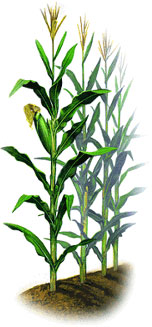
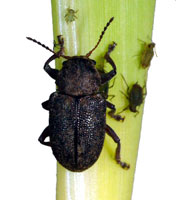 With early planting and relatively cool soils corn farmers should be on guard for two insects that may be cutting their newly emerging corn. While most growers are familiar with black cutworm feeding on corn seedlings, there is an uncommon pest that has become more common in the past several years. It is the Southern corn leaf beetle, and its damage to the seedlings is very similar to that caused by young cutworm larvae.
With early planting and relatively cool soils corn farmers should be on guard for two insects that may be cutting their newly emerging corn. While most growers are familiar with black cutworm feeding on corn seedlings, there is an uncommon pest that has become more common in the past several years. It is the Southern corn leaf beetle, and its damage to the seedlings is very similar to that caused by young cutworm larvae.
Southern corn leaf beetle feeds on early-planted corn, and has been a pest in portions of western and central Kentucky. This insect pest has become more of a problem in the past couple years and may not be properly recognized by many growers. This pest can reduce stands through feeding on young seedlings. Particularly while growing conditions are poor for rapid seedling growth, growers need to monitor fields for this insect pest.
Southern corn leaf beetle is a small dark beetle that is camouflaged and easily blends in with the soil. It looks similar to an alfalfa weevil. When disturbed they readily drop to the ground. They attack the young seedling by feeding on the leaf margins and chewing into the side of the stem. Their damage can easily be mistaken as young cutworm or armyworm feeding. In the field the injured plants had the youngest leaves still partially attached, but were laying on the soil as would be the case with cutworms. The beetles will lay their eggs at the base of the plants and larvae feed on the roots of corn during the early summer.
Trap catches of black cutworm are up this year and there have numerous reports of economic infestations in states to our south. When scouting fields for cutworms, it is important to try and locate the insect to determine which insect is causing the damage. There are no thresholds for southern corn leaf beetle, but Illinois and Iowa have used 25% infested or damaged plants as a guideline for treatment.
Seed treatments may not provide enough control of this pest where they are common. Where growers find southern corn leaf beetles in high numbers, they will need to select an insecticide that will specifically target this pest. Growers should scout their fields regularly for black cutworm larvae and use a threshold of 3% cut plants and 2 live larvae per hundred plants to determine if treatment is necessary.
For information about corn pests, visit
"Insect Management Recommendations".


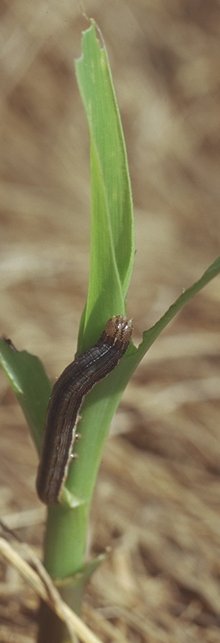 Armyworms fed extensively in some pastures and hayfields last spring. Usually, infestations were discovered late, after the larvae were large and had completed most of their feeding. A check of pastures with the tallest growth or lush, lodged areas can help to identify places that may have infestations that would benefit from an insecticide application this spring (see article in this issue on armyworm flight).
Armyworms fed extensively in some pastures and hayfields last spring. Usually, infestations were discovered late, after the larvae were large and had completed most of their feeding. A check of pastures with the tallest growth or lush, lodged areas can help to identify places that may have infestations that would benefit from an insecticide application this spring (see article in this issue on armyworm flight).
There are probably at least a few armyworms in every pasture but significant damage occurs only in fields that receive large numbers of egg masses. These seem to be fields with the tallest grass when moths are flying. Generally, little damage appears in closely clipped or moderately grazed pastures where grass was relatively short during moth flight.
Armyworms prefer grasses and feed on the edges of grass blades, eventually leaving only the tough midrib. They will leave broadleaves alone until there are no grasses left. They do about 80% of their feeding during the last few days of their development. Armyworms usually do not damage the growing point of grasses so their injury is similar to very close mowing. Without foliage to eat, they will leave defoliated fields and move en mass (in armies) to adjacent grass.
Decisions on use of insecticides should be made carefully and targeted at fields where armyworms have eaten grass completely down to the crown or perhaps protecting adjacent fields where armyworms are moving in. Sevin, Malathion, and Bt based (Dipel, etc.) products are labeled for pastures. There is no value in treating just before the rain. Armyworm larvae are striped caterpillars that range in length from about 1/16" when newly hatched to 1.5 to 2" when full grown. They vary from dark greenish-brown to black with pale white, orange, and dark brown stripes along the length of the body. The head is yellowish brown with a brown network of veins.
Insecticide alternatives for armyworm control in pastures and hay fields are limited to Bt products, malathion (Cythion) and carbaryl (Sevin). Early detection will be the key to successful control because small larvae will be more vulnerable to an application than large ones.

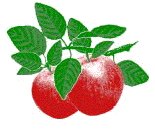
Orchardists and Nursery growers in Kentucky are concerned about whether or not their freeze-injured trees will be subject to fire blight infections. Fire blight disease-favorable weather is likely to occur this week and could answer the question of susceptibility of freeze-injured tissue more than two weeks following the record-setting freeze. Normally, it would be expected that cold injuries to shoots and foliage of apples, pears, crabapples, flowering pears, and serviceberries could provide avenues of infection for fire blight bacteria, so even if the trees are not in bloom, they could be at risk for infection. However, with much of the injured foliage now dropping off the trees, perhaps the risk of infections through injuries is reduced. Keep in mind that some apples and flowering crabapples may have trailing blooms that would also provide avenues for fire blight infections if disease-favorable weather occurs.
The risk of fire blight infection currently (Monday, April 23) is high (extreme in western Kentucky) because of warm temperatures over the weekend and the chance of rain later today. Fire blight risk will increase from high to extreme tomorrow (Tuesday) and remain there through the week in all regions of the state as the weather continues to be warm and rain chances increase. Based on current forecasts rainfall chances today are generally 20-30% statewide, but higher in northern Kentucky. The chances of rain increase to 50 or 60% Tuesday and 60-70% on Wednesday, so fire blight infections could occur during rainy periods late Monday or on Tuesday, Wednesday, or Thursday.
Growers who are concerned about fire blight in their orchards or nurseries, especially if apples, pears, crabapples, flowering pears, or serviceberries were injured from the freeze or are still in bloom will want to consider applications of streptomycin today. Streptomycin applications remain active for about 4 days, so applications made today should cover infections that could occur for the remainder of this week.
Information for this article was derived from computer disease simulations adapted by T. Priddy and W. Wang, U.K. Ag. Weather Center, from national weather service forecast data, and from disease forecasting instruments monitored by T. Jones at the U.K. Robinson Station in eastern Kentucky. Growers will want to make pest management decisions based on their local orchard or nursery circumstances.

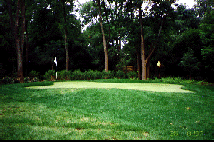
Scientists in Cornell University's turfgrass program, working with Cornell's Program on Breast Cancer and Environmental Risk Factors, have developed an interesting database called the Turf Pesticides and Cancer Risk Database (online at http://envirocancer.cornell.edu/turf/index.cfm). In this database, one can quickly determine the carcinogenicity potential of an extremely wide variety of pesticides used in turfgrass management.
The database is authoritative and easy to use, so I became curious to see what I could learn about some of the common turf fungicides. The results of my efforts are given in table 1. In reviewing these results, one should understand what they mean and what they don't mean. The column labeled "US EPA Cancer Risk Category" provides the most recent assessment by the Environmental Protection Agency as to the potential carcinogenicity of that active ingredient. These assessments are almost always based on laboratory tests of one sort or another, and it only indicates whether or not a particular active ingredient might be carcinogenic at some dose under laboratory conditions. A rating that indicates a possible cancer risk does not mean that a golfer or pesticide applicator will develop cancer, because the rating does not take into account application rate, frequency of use, use patterns in the field, routes of pesticide exposure, and so on. Remember too that these assessments are only of the cancer risk potential from the active ingredients themselves, not the commercial fungicide products. The assessments do not include the health risks from inert ingredients present in the commercial product.
I must admit I was surprised at how many turf fungicides show some indications of being potentially carcinogenic. Eleven of the 18 examined are likely or possible carcinogens. Once again, this does not mean that applying a fungicide to turf will result in anyone developing cancer. However, it is sobering food for thought, and it serves as a sobering reminder to:
1. Use pesticides only when necessary,
2. Minimize exposure of workers and the public to pesticides when they are used.
| Table 1. Carcinogenicity potential of selected fungicides used in turfgrass management. | |
|---|---|
| Active ingredient | US EPA Cancer Risk Category |
| Azoxystrobin | Not likely to be carcinogenic |
| Boscalid | Suggestive Evidence of Carcinogenicity, But not Sufficient to Assess Human Carcinogenic Potential |
| Chlorothalonil | Likely to be carcinogenic to humans |
| Ethazole (Etradiazole) | Group B2-Probably Human Carcinogen-Sufficient Evidence from Animal Studies |
| Fenarimol | Not likely to be carcinogenic |
| Fosetyl-Al | Not likely to be carcinogenic |
| Iprodione | Likely to be carcinogenic to humans |
| Mancozeb | Group B2-Probably Human Carcinogen-Sufficient Evidence from Animal Studies |
| Mefanoxam | Not likely to be carcinogenic |
| Myclobutanil | Group E-Evidence of Non-carcinogenicity For Humans |
| PCNB | Group-C, Possible human carcinogen |
| Propamocarb hydrochloride | Not likely to be carcinogenic |
| Propiconazole | Group-C, Possible human carcinogen |
| Pyraclostrobin | Data are inadequate for an assessment of carcinogenic potential |
| Thiophanate-methyl | Likely to be carcinogenic to humans |
| Triadimefon | Group-C, Possible human carcinogen |
| Trifloxystrobin | Not likely to be carcinogenic |
| Vinclozolin | Group-C, Possible human carcinogen |

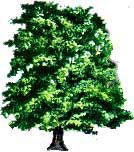
Phytophthora ramorum causes Sudden Oak Death on oak trees and Ramorum leaf and tip blight diseases on ornamental plants and is believed to move long distance through the movement of infected plants, plant parts, soil and mulch.
During 2006, 46 states reported results for the National Nursery Survey for P. ramorum and 95,295 samples were collected from 3,513 nurseries inspected across the country. From this total, 352 samples were confirmed positive in 56 nurseries in 11 states. California; Oregon; Washington; Florida; Alabama; Connecticut; Georgia; Indiana; Maine; Mississippi and Pennsylvania. Alaska, Iowa, Missouri and Puerto Rico did not participate in the survey.
In 2007 so far, Washington state has had three P. ramorum positive nurseries found as a result of implementation of the trace-back protocol and of the Compliance Certification Inspection for nurseries that ship P. ramorum host and associated plants interstate. A 2007 inspection following up on eradication in one 2006 P. ramorum positive nursery in Mississippi, Hinds County, showed that this nursery had one camellia plant positive for P. ramorum. The nursery is presently under an emergency action notification. Also in 2007, the European strain of P. ramorum has been confirmed in a retail nursery in Humboldt county, CA, this nursery does not ship outside the state and has implemented best management practices, it is not known at this time where the infected plants came from and trace-back investigations are underway.
The Tiffany Creek Preserve in Nassau County, NY has been officially confirmed P. ramorum-free, one red oak tree in the forest was found to be P. ramorum-positive in 2005, after collection of many samples and repeated laboratory analysis the pathogen was never recovered from the tree and from the surrounding area through the fall of 2006.
An updated list of P. ramorum host and associated plants is available on the USDA-APHIS-PPQ
website (http://www.aphis.usda.gov/ppq/ispm/pramorum/pdf files/usdaprlist.pdf), 45 plants are listed as proven hosts regulated for P. ramorum and 62 plants are listed as plants associated with P. ramorum and regulated as nursery stock only.


Despite their importance in nature, birds can become pests when they nest or roost around buildings. In the coming weeks, clients will experience various problems stemming from birds on their premises.
Significance as Pests - Pigeons, starlings and sparrows cause millions of dollars in damage by defacing buildings, sidewalks and vehicles with their droppings. Gutters, downspouts and air vents can become blocked by nesting materials, and the feathers, filth, and carcasses can lead to secondary pest problems by attracting carpet beetles, flies and other scavenger insects. Birds nesting around buildings also may pose a health hazard to people and farm animals. Mites, lice and bird bugs (related to bedbugs) can invade living areas and bite humans after the nestlings leave or a bird dies. Birds can also transmit salmonellosis (food poisoning), or histoplasmosis and cryptococcosis - systemic fungal infections acquired by inhaling airborne spores which grow in bird droppings.
Bird mites- These bloodsucking parasites normally live on the birds or in their nests, but will sometimes disperse into buildings. People become aware of the problem when they are attacked by mites searching for an alternate food source. The bites cause itching and irritation, but do not result in disease. Bird mites are tiny but can be seen with the naked eye. They are about the size of the period at the end of this sentence, and appear as slow-moving specs as they crawl about on walls and other surfaces. Bird mites can survive several days without a host. Unless corrective measures are taken, the occupants will probably continue to be bitten.
The first step in controlling bird mites is to remove the birds and their nests. Nests typically will be found in attics, around eaves, window ledges, and rafters, or in gutters or chimneys. Wear gloves when handling dead birds, and a respirator when removing nesting materials to avoid inhaling fungal spores and other potential disease-producing organisms associated with the droppings. After nests are removed, the nest location and adjacent areas should be sprayed with an insecticide such as those labeled for flea control. Permethrin and carbaryl are examples of effective active ingredients. A vacuum cleaner or cloth moistened with alcohol or dilute ammonia solution can be used to eliminate mites crawling on walls, floors and other indoor surfaces. Laundering (hot or warm cycle) will kill any mites crawling on clothing or bedding.
Bird Management - The most effective way to avoid problems with pest birds around buildings is to deny them nesting and roosting sites. The best time to do this is before nests are well established. Vents and other small openings should be sealed with 1/4-inch hardware cloth or similar exclusion materials. Attic vents may need to be screened or netted on the exterior to prevent sparrows from nesting between the louvers. Nesting or roosting on ledges, eaves, window sills and other surfaces can be deterred by installing tightly strung, parallel strands of wire just above the surface of the ledge. Roosting can also be discouraged by changing the angle of the ledge to 45 degrees or more with sheet metal or wood boards. Porcupine wire 'spikes', coils, repellent gels, or netting are effective provided they are properly installed. Homeowners can purchase bird exclusion materials at hardware or farm supply stores, or may want to call a professional pest control firm.
Before installation, remove nests and droppings to avoid potential problems with scavenger insects and disease pathogens. Gloves and a respirator equipped with a HEPA (high efficiency particulate air) filter should be worn to avoid inhaling fungal and bacterial spores; a dust mask alone is insufficient. Lightly moistening droppings and nesting materials with water before removal reduces the tendency for dust and spores to become airborne.
Fake owls, rubber snakes, brightly colored balloons, etc. are sold as deterrents to nesting. These devices usually fail because birds soon become acclimated to their presence and ignore them. If these devices are tried, reposition them periodically or vary the pattern. Repeated disruption of nest-building activities with loud sounds or the spray from a water hose can be effective but require persistence. Such efforts should ideally begin before the birds have formed a strong attachment to the site. If frightening efforts are to be successful, they must continue for several days and may need to be repeated if the birds decide to rebuild. Toxic baits or shooting of birds should be avoided and in many areas is illegal. Large or complicated bird jobs usually require the expertise of a professional pest control or nuisance wildlife firm.
Finally, any leftover bird seed from winter feeding should be stored in tight-fitting containers. Unsealed bags of seed left in the garage or basement are prime targets for meal moths, mice and other pests.

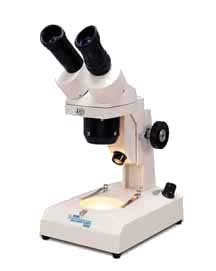
Weather-related problems were observed on many plant samples this week in the PDDL: cold injury was seen on wheat; heat injury on tobacco transplants was seen in cases where greenhouses were overheated; and landscape samples were submitted with previous winter injury, as well as injury from the recent freeze.
Samples with infectious diseases included Mycosphaerella leaf spot on strawberry; Pythium root rot on cucumber transplants; Sclerotinia stem rot on tomato and kale; Mycosphaerella leaf spot on iris; Volutella canker on boxwood; and black root rot on holly.

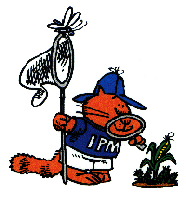
UKREC-Princeton, KY, April 6-13, 2007| True Armyworm
| 224
| Corn Earworm
| 0
| Black Cutworm
| 3
| | |
Jackson, TN, April 6-13, 2007| True Armyworm
|
| Corn Earworm
|
| Black Cutworm
|
| | |
Milan, TN, April 6-13, 2007| True Armyworm
|
| Corn Earworm
|
| Black Cutworm
|
| | |
Lexington, KY, April 6-13, 2007| True Armyworm
| 20
| Corn Earworm
| 0
| Black Cutworm
| 0
| | |
This season insect trap counts will be provided for locations in Kentucky and Tennessee.
View trap counts for past seasons and the entire 2007 season at -
http://www.uky.edu/Ag/IPMPrinceton/Counts/2006trapsfp.htm
View trap counts for Fulton County, Kentucky at -
http://ces.ca.uky.edu/fulton/anr/
For information on trap counts in southern Illinois visit the Hines Report at -
http://www.ipm.uiuc.edu/pubs/hines_report/comments.html
The Hines Report is posted weekly by Ron Hines, Senior Research Specialist, at the
University of Illinois Dixon Springs Agricultural Center.
NOTE: Trade names are used to simplify the information presented in this newsletter. No endorsement by the Cooperative Extension Service is intended, nor is criticism implied of similar products that are not named.
Lee Townsend
Extension Entomologist